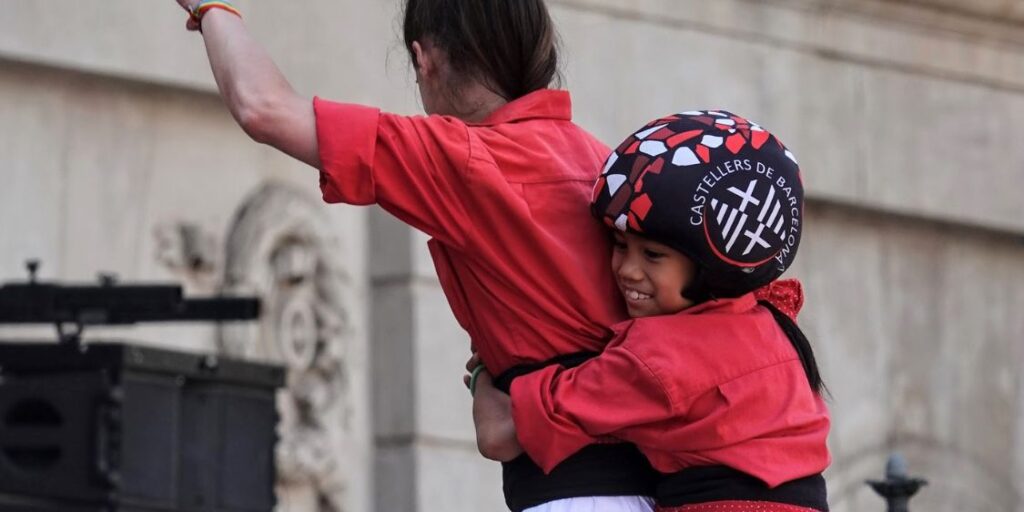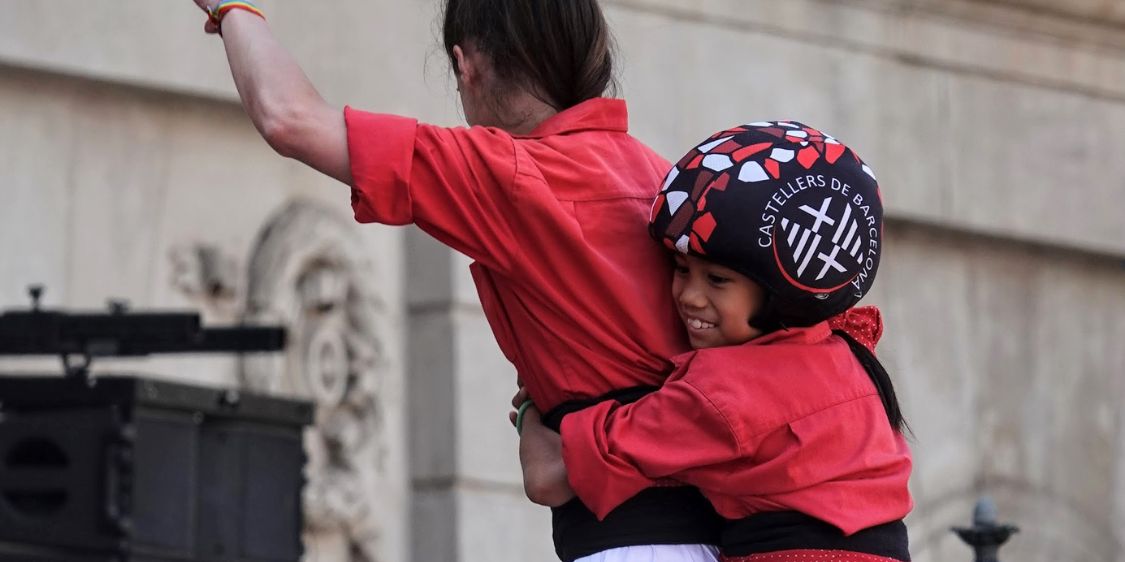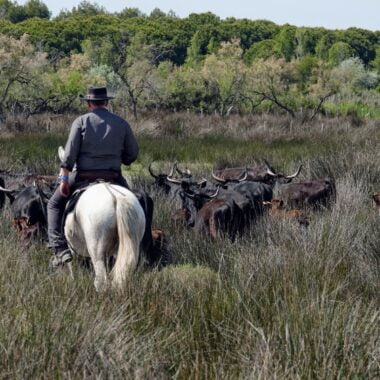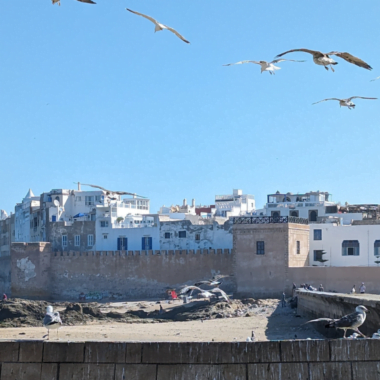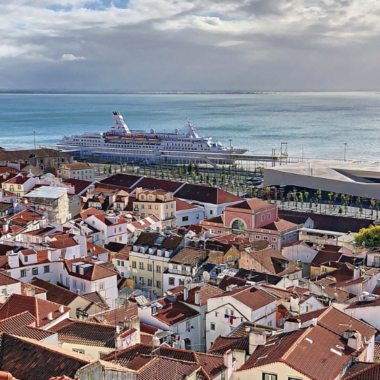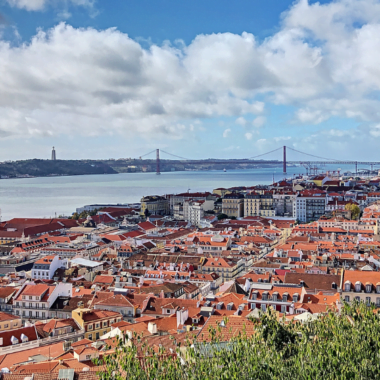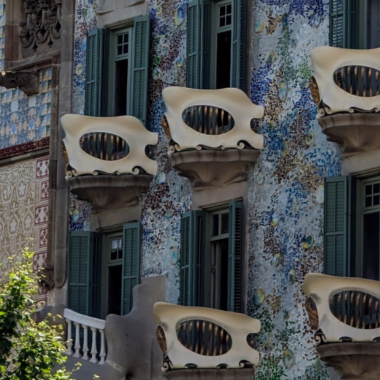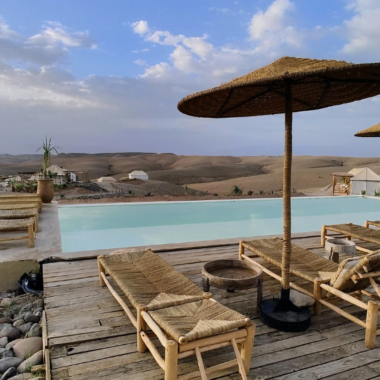While visiting Barcelona, I had the opportunity to witness the 54th anniversary of the Castellers de Barcelona. A castell, meaning “castle” in Catalan, is an awe-inspiring human tower of six to ten levels. These grand structures are constructed by castellers, individuals of all ages, including men, women, and even children as young as five, regardless of their stature or strength.
How are such towers constructed? The answer awaits below in the video! 😉 But before getting practical, let’s delve into the symbolism of castells with a few introductory words to enhance our understanding.
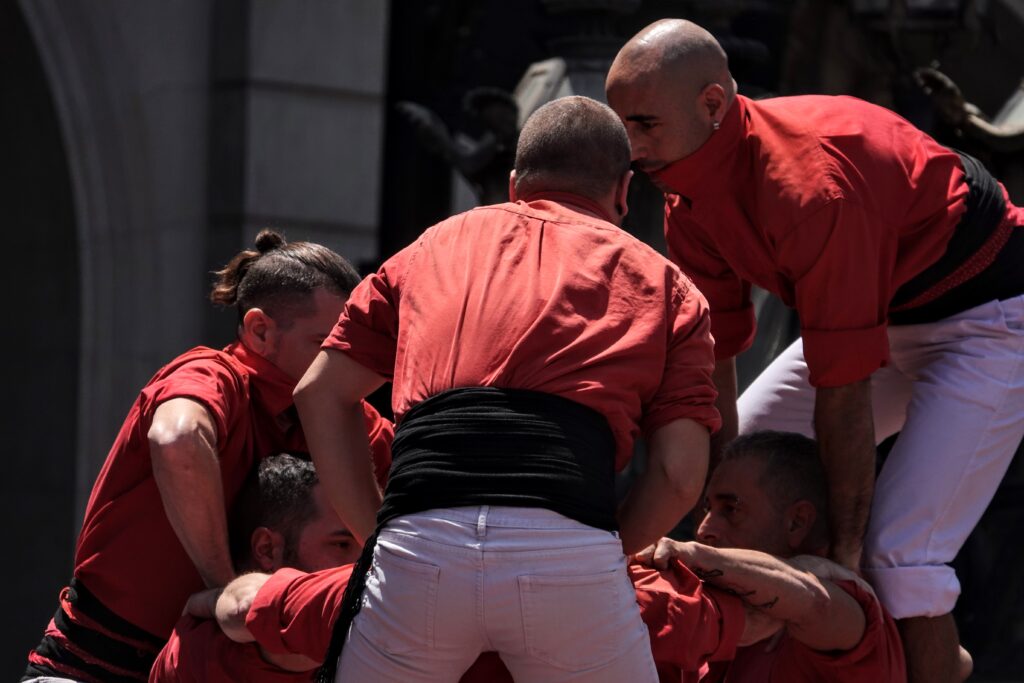

A journey through the history of castells
The origin of castells dates back to specific dances from the early 17th century practiced in southern Catalonia, Valencia, and concluded with a final figure in the form of a small human tower. This was known as “ball de valencians” or the “dance of the Valencians“.
During the 18th century, this type of dance takes root in the Tarragona region, and the final figure gains significance: the human tower has to be increasingly taller to surpass oneself and exceed the towers of other groups.
In Valls, the final form gains its autonomy to become the castells we know today. The castells are then performed by colles, groups of individuals from the same community, village, or family. As the tradition of castells spread throughout Catalonia in the 19th century, every town and village in Catalonia sought to form its colla to participate in regional and national competitions.
Growing in popularity, the castells continue to surpass expectations. The construction techniques and training of the castellers become more refined, enabling the creation of increasingly stable and daring human towers. The first nine-story castell dates back to 1851. However, due to a significant rural exodus, the rise of the sardana (traditional dance), and the emergence of modern sports like football, the castells experience a decline to near disappearance. 1893 witnessed the last nine-story castell for nearly a century.
In 1926, new groups start forming colles outside their original territories, leading to substantial growth in the casteller world. Eight-story castells become regular; colles even opt for colorful shirts to stand out.
The three years of the Spanish Civil War (1936-1939) represent a setback for the practice of castellera. However, while various symbols of Catalan culture, such as the national anthem, sardana dance, flag, and language, are prohibited under Franco’s dictatorship, the building of castells remains untouched by any prohibition.
The transition to democracy involves a significant social movement that reclaims the streets and celebrates Catalan culture. New colles emerge, going beyond the traditional casteller framework, establishing a new colla model. Closer to current values, castells become a selfless and inclusive activity.
In 1981, nearly a century later, the Colla Vella dels Xiquets de Valls successfully disassemble a nine-level human tower. This castell is adopted by numerous other groups across the country, demonstrating its widespread popularity and influence.
With the inclusion of castells at the 1992 Barcelona Olympic Games, the practice of castellera experiences significant growth, leading to the formation of numerous new colles. By the late 90s, there were nearly sixty colles, twice as many as a decade earlier.
In 1993, the Minyons de Terrassa achieve a milestone by successfully completing the first-ever “castell de la gama extra” (a tower of greater difficulty than the nine-story castells). Fast forward to 1998, the first ten-story castells are constructed.
In November 2010, Spain proudly declare the castells as part of UNESCO’s Intangible Cultural Heritage list. Today, they continue to symbolize unity, cooperation, and the rich Catalan culture. These impressive human towers are celebrated yearly at festivals and special events, involving nearly 13,000 castellers belonging to about a hundred colles.
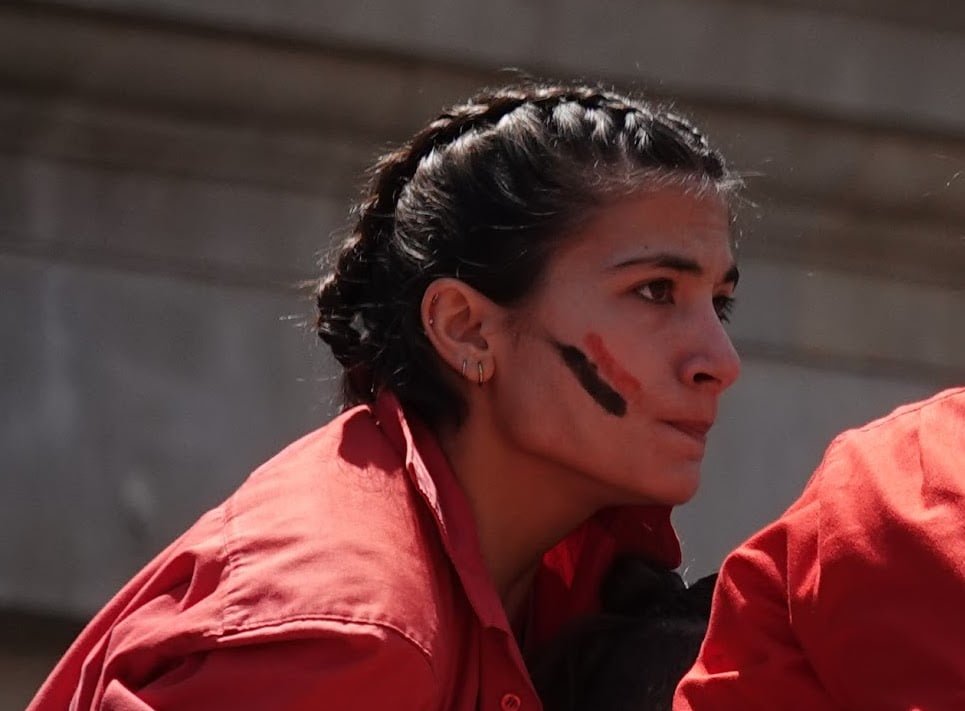
Castell, the user manual
Building a castell
Far from being a result of chance, the construction of a castell is composed of three distinct parts, meticulously adhering to specific architectural principles:
- The foundation of the tower, known as “la pinya,” is formed by several dozens of castellers who interlock their shoulders to create a stable structure capable of bearing the weight of the entire tower and cushioning any potential fall of the climbers. The width of the base varies depending on the number of planned levels for the tower.
- The human tower (called “tronc“) is built with as many levels as the figure requires. Each level has an equal number of castellers, starting with the heaviest individuals.
- The uppermost level of a human tower, known as the “pom de dalt,” comprises children who don helmets for safety. The youngest member called the “enxaneta,” ascends to the tower’s pinnacle and proudly raises their arm to signal the completion of the castell. To be considered valid, a castell must also be dismantled with all climbers descending safely.
When castells have multiple levels, the foundation is reinforced between the pinya and the tronc by adding a second support base (folre) and sometimes even a third (manilles). These additional bases are designed like the pinya but with fewer castellers.
The name of a castell depends on the number of floors and castellers per floor of the structure. For instance, a “3 de 8” castell refers to a tower with eight floors (including the pinya, folre, and manilles), with each floor of the structure composed of three castellers.
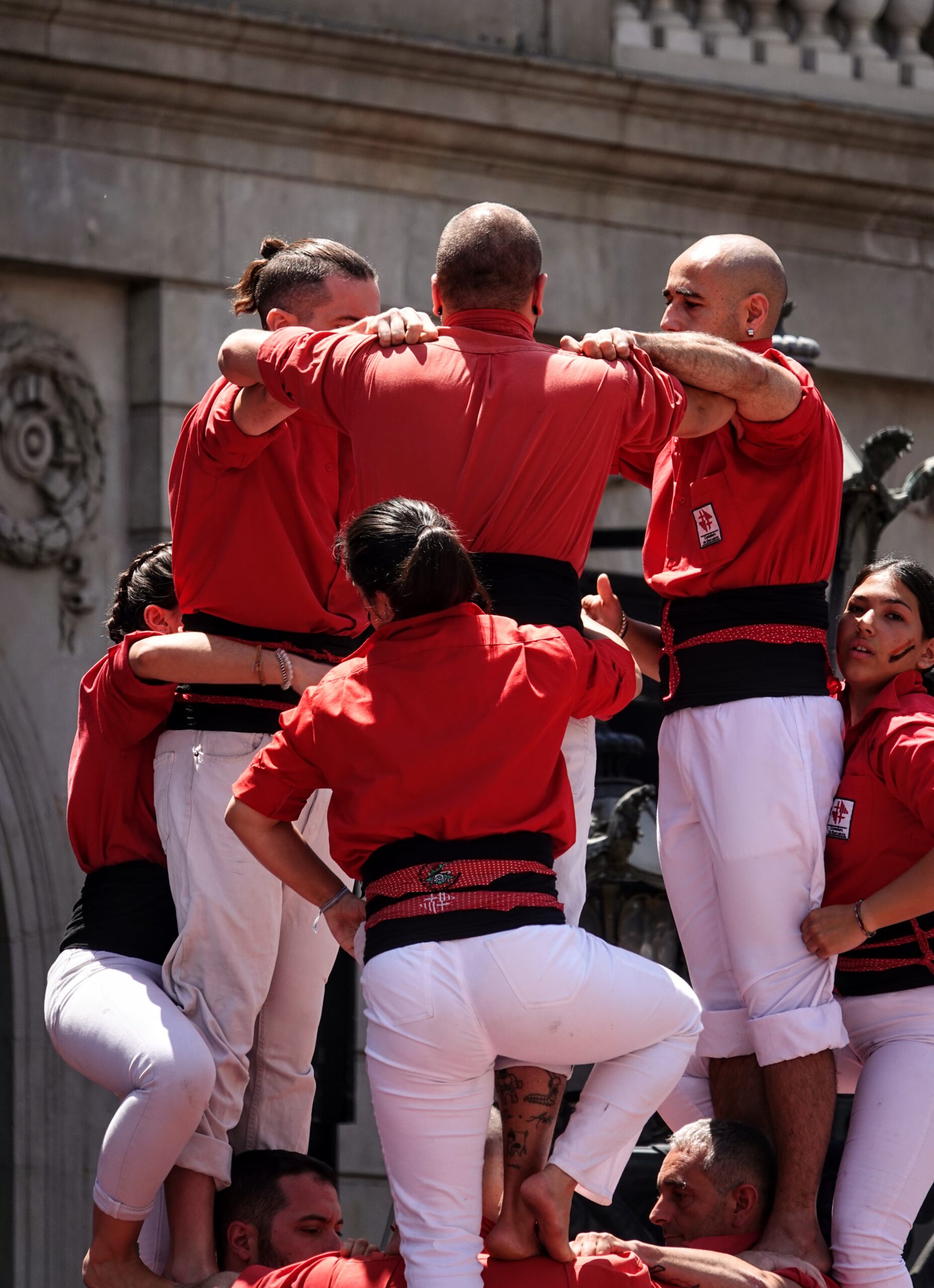
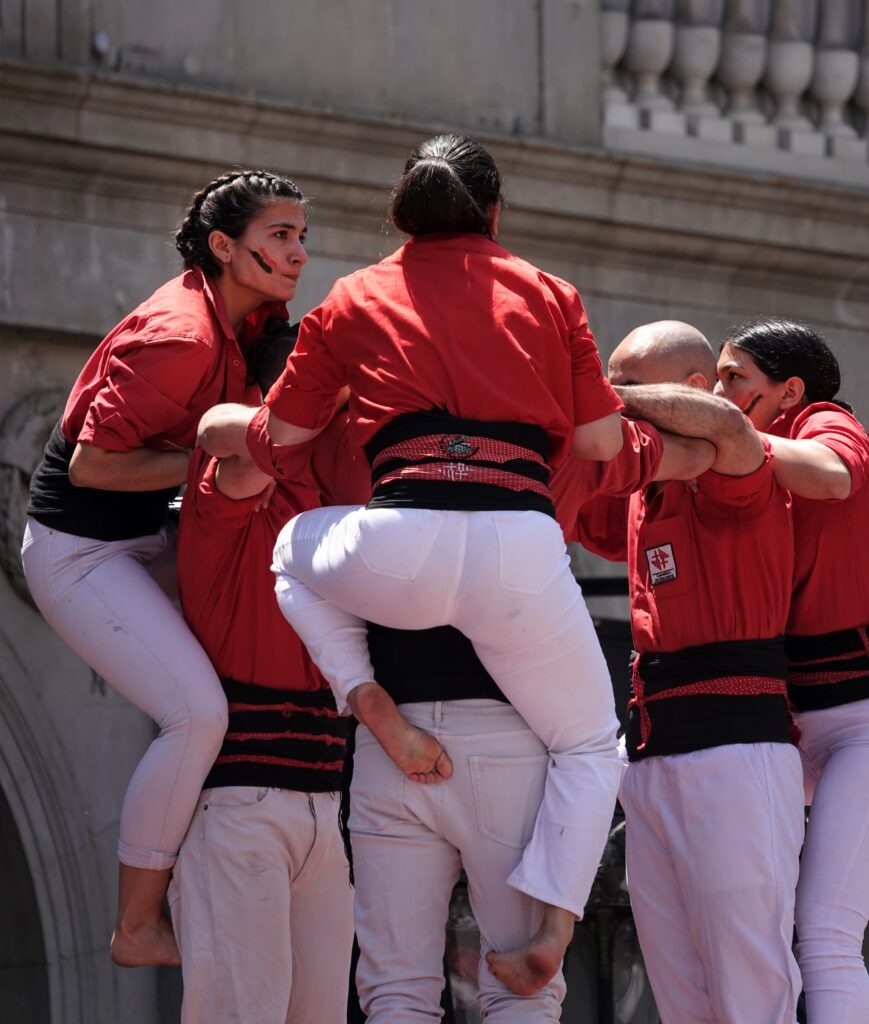

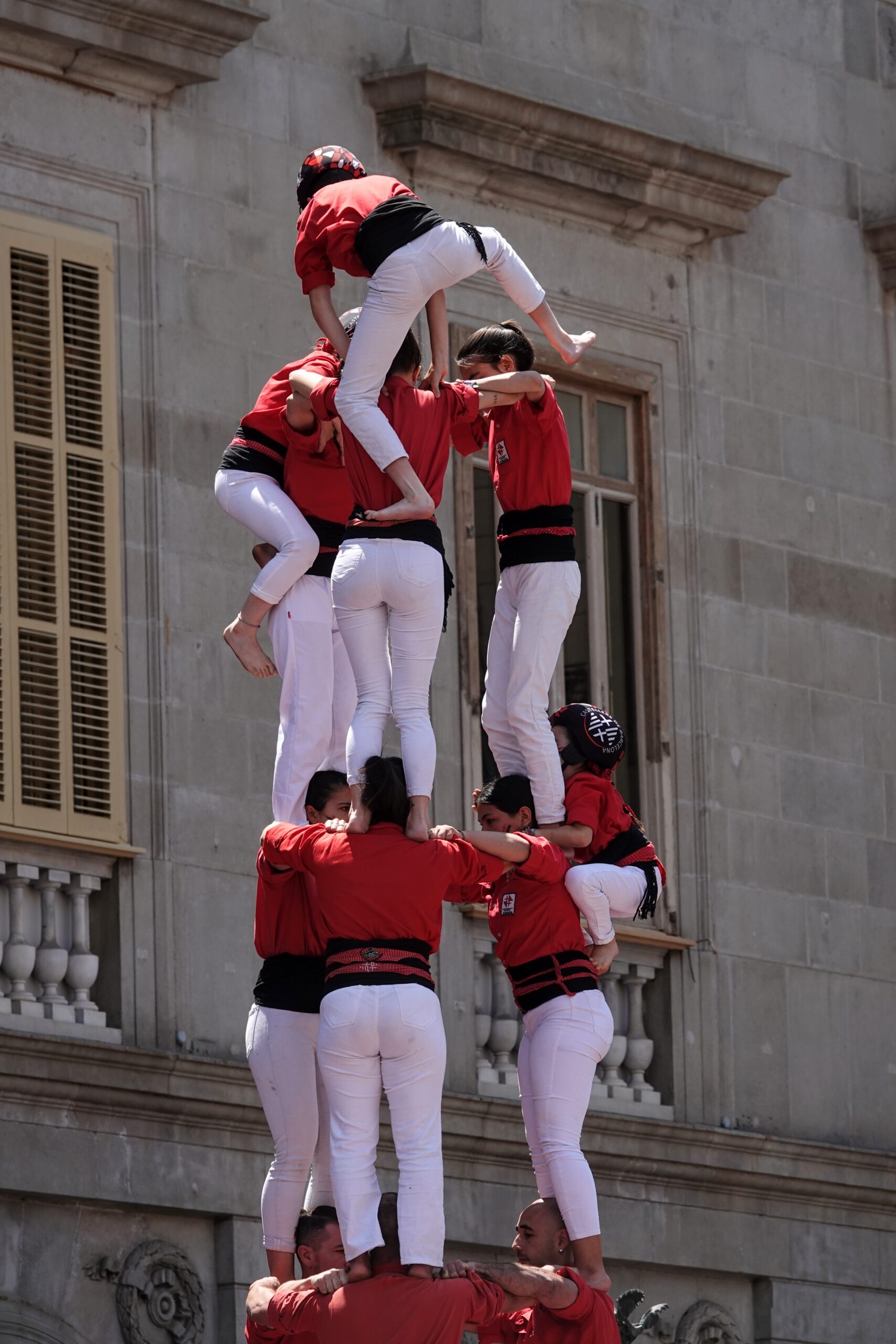
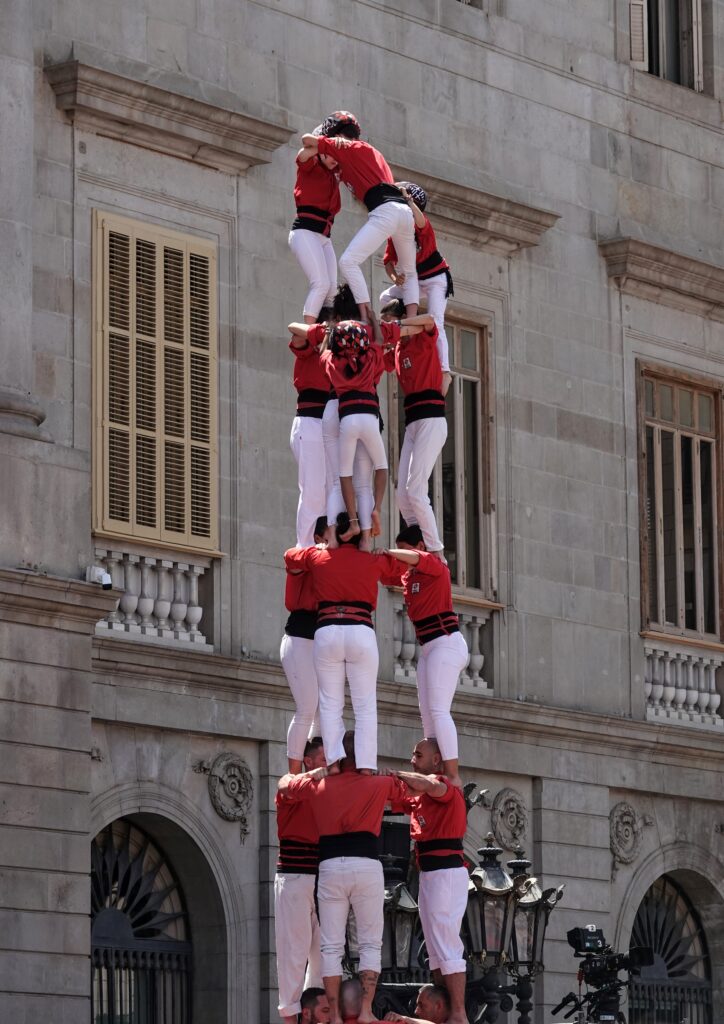
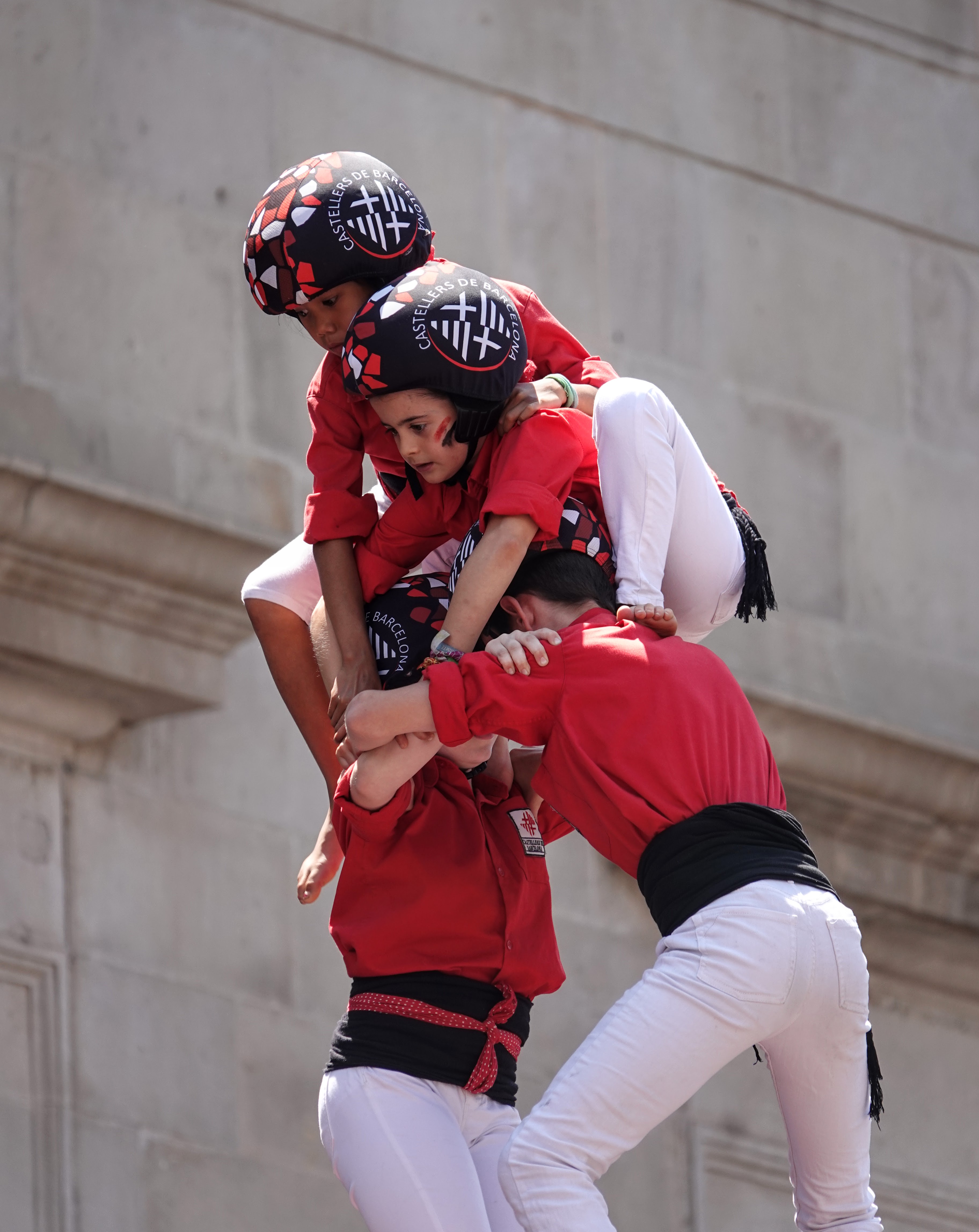
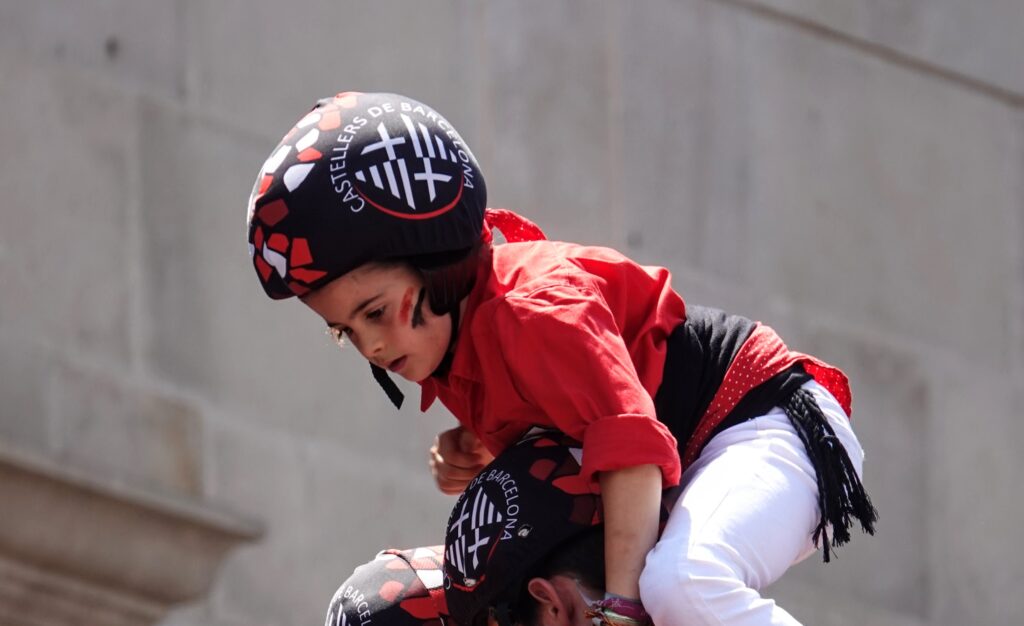
Here’s what it looks like in video format. 😮
Understanding castells: how they operate
While there isn’t a specific set of rules governing the castells, the standards that govern the construction of human towers are well known among all castellers.
A castellera performance usually includes three castells (sometimes more) and an exit pillar from each participating colla. The castells are built according to an agreed order or drawn by lot before starting.
If a colla cannot successfully complete the desired castell, they can try again. Colles do not come together to defeat their opponents; they strive above all else to surpass themselves and achieve their goals. When rival colles unite, they naturally endeavor to execute more intricate castells than their counterparts, but ultimately, there is no victor or vanquished.
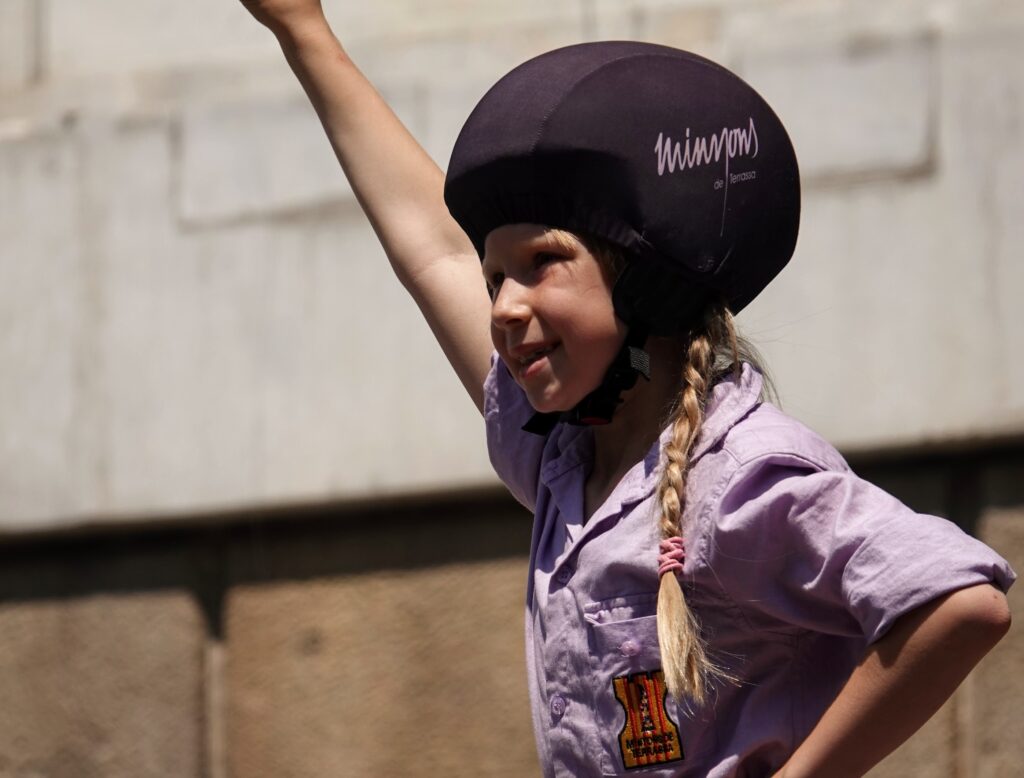
Castell music
No castell without the music of grallas (traditional Catalan oboes) and drums!
During a diada castellera (a celebration day), the “toc de entrada” resonates first on the plaza, signaling the start of the castells. Following that is the “toc del pilar caminant,” which accompanies the towers in motion (pilar caminant). While castells are generally static, they sometimes move during special celebrations. The challenge then lies in traversing a certain distance while bearing the tower’s weight and maintaining balance.
The towers rise to the “toc de castells” rhythm, synchronizing their cadence and volume with the difficulty levels. This allows the castellers forming the base and those integrating the structure to coordinate their movements in tune with the melody. The music evolves throughout the entire building and the dismantling of the tower.
After the completion of the human towers, the “toc de vermut” music entices the audience to gather around the table.
Costume of the castellers
Originally, a casteller would wear a traditional Valencian dancer’s costume: trousers and a light-colored shirt, a scarf, a headscarf, espadrilles, ankle bells, and castanets in their hands.
Initially deemed impractical for building a castell, the traditional costume underwent simplification. It now comprises white pants, a flannel belt (faixa) providing a grip for climbers, a colorful shirt (each colla wearing a different color), and a bandana.
Only the pinya castellers wear shoes; the others climb barefoot.
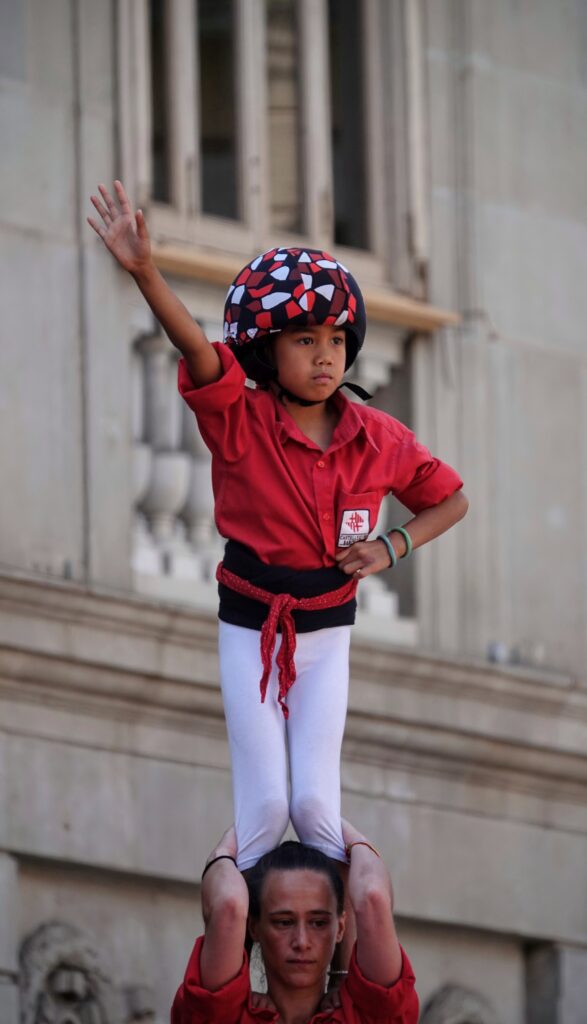

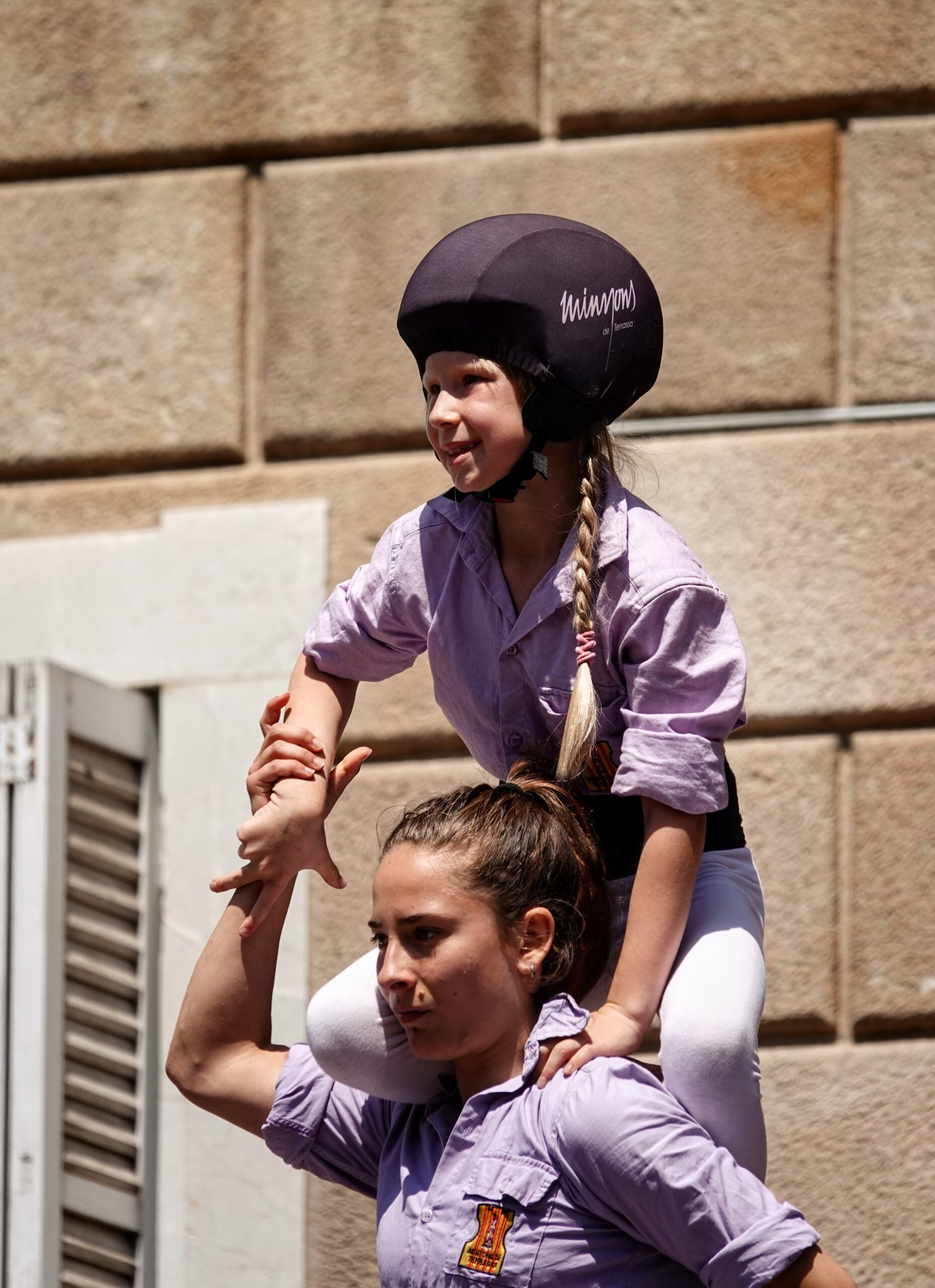
Where and when can you witness castells?
Traditionally, the castellera season started on Sant Joan (June 24th) and concluded with the diada de Santa Úrsula in late October. However, over the years, this calendar has been expanded, and nowadays, it’s possible to witness castells being performed almost every weekend throughout a significant part of the region, amounting to over 10,000 castells.
Some dates are particularly popular, such as the Festes Majors in various districts of Barcelona and the Diada Històrica de la Mercè (the city’s patron saint festival at the end of September), which features a collective performance where all the colles in the city come together at Plaza Sant Jaume.
